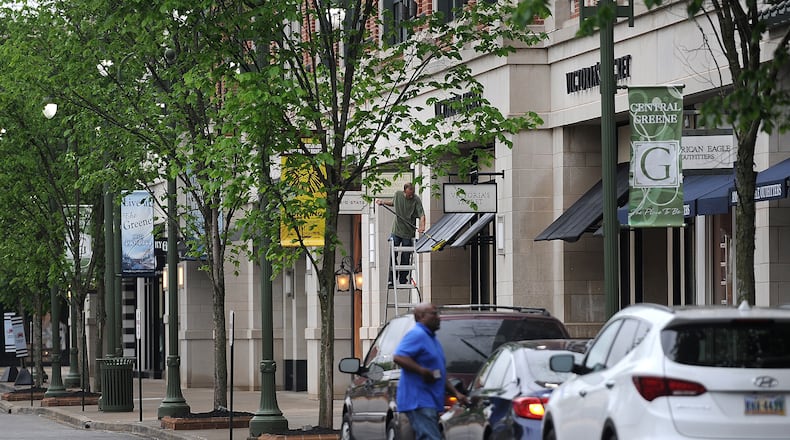“The Greene Town Center has been actively engaged with its lender, negotiating in good faith and over a period of time, to find a reasonable and mutually agreeable outcome,” a spokesperson for the Greene said Tuesday evening. “While we are disappointed with the recent actions of the lender, it is our intention to continue to work with them to find a resolution.”
The spokesperson added that the Greene remains open for business, and “is excited to announce new and first-to-market tenants to the Dayton market.”
In a complaint with over 300 pages of exhibits filed Friday in Greene County Common Pleas Court, Wells Fargo says Greene Town Center LLC entered into a November 2013 deal in which Citigroup Global Markets Realty Corp. agreed to loan them $137.25 million, and Greene Town Center LLC executed a promissory note to repay that amount plus interest and charges. That deal came seven years after The Greene first opened.
Wells Fargo says in March 2014, the deal was severed into two promissory notes ($90 million and $47.25 million), which eventually were transferred to Wells Fargo.
This story is free
We've opened this story as free to help you experience the important and entertaining journalism we're producing. Here are some ways you can follow our work:
- • READ: Ohio AG probes STRS teacher pension board; retiree group calls it ‘sour grapes’
- • READ: New UD guard known as ‘great defender’ and ‘big-time leader’
- • SIGN UP: Get the news of the day delivered to your inbox every morning with our free Morning Briefing newsletter.
- • SUBSCRIBE: Like what you see? Explore all special offers here
The complaint says those notes “are in default as the result of borrower’s failure to pay all amounts due thereunder by the Dec. 1, 2023 maturity date. As a result … all unpaid principal, all accrued and unpaid interest and all other amounts due under the notes are immediately due and owing.”
Wells Fargo says that as of May 1, it is owed $71.8 million on the $90 million note, and $41.1 million on the $47.25 million note, plus interest that continues to accrue at $28,780 per day.
The complaint asks that the “mortgage and fixture filing liens be foreclosed; and that the real property and fixtures be ordered sold, and that the plaintiff be paid out of the proceeds of such sale,” plus possible other relief. Under the assignment of rents, it also asks for an order that Greene Town Center LLC “turn over all rents in its possession or in the possession of its agents …”
SMS Assist, LLC and EnviroControl Systems, Inc. (doing business as Lifestyle Comfort Solutions) are also listed in the suit as “may claim to have some interest in” at least a portion of the property.
Credit: JIM NOELKER
Credit: JIM NOELKER
The city of Beavercreek issued a statement Tuesday, saying they “have been made aware of the recent developments regarding The Greene Town Center, and recognize its significance as a hub for commerce and activities within our community.”
“Our priority is to ensure continued economic vitality and stability for our city. We remain optimistic about The Greene’s future,” the city said.
The Greene Town Center opened in 2006 with 35 tenants. Now, the 72-acre shopping center lists more than 125 commercial tenants. Those include about 20 restaurants, not quite 100 retail/entertainment options, plus some office users, as well as apartments. The development bills itself as the area’s “premier fashion and dining destination,” according to its website.
When it opened, The Greene was a much-anticipated addition for shoppers in the region. A 2006 article in this newspaper said the grand opening at Interstate 675 and Indian Ripple Road was filled with crowds of shoppers, waves of music, happy diners and children squealing in the water fountain.
In 2016, this newspaper reported that the shopping center had developed a 10-year plan as part of its 10-year anniversary. They called it an “ever-evolving” process that would depend on limited physical space, the growth of online shopping and customer trends, including with other local malls.
The Greene’s occupancy rate has remained relatively solid despite the trouble brick-and-mortar retailers have had as online shopping has continued to grow.
About the Author



